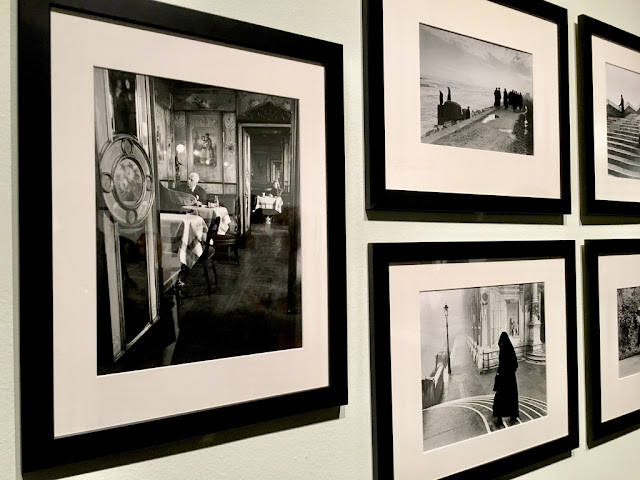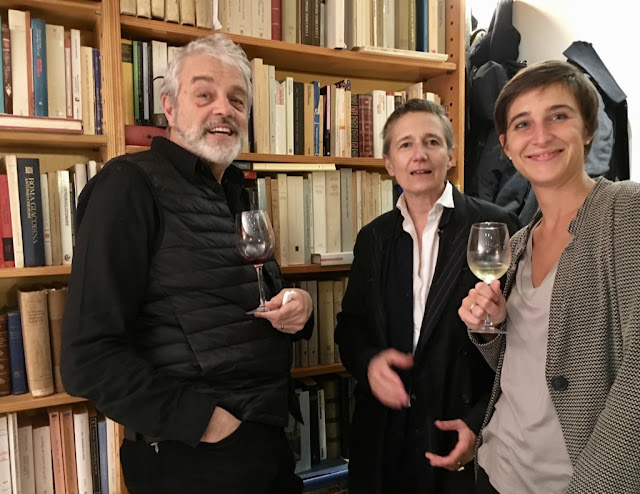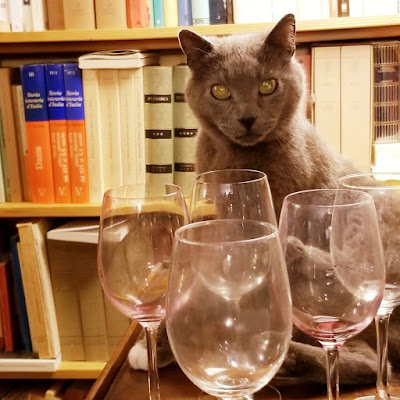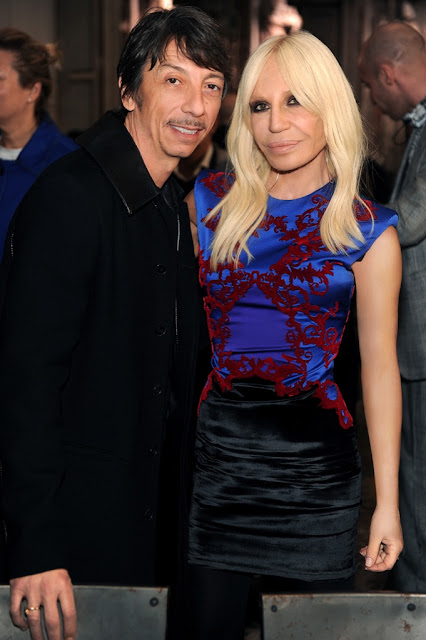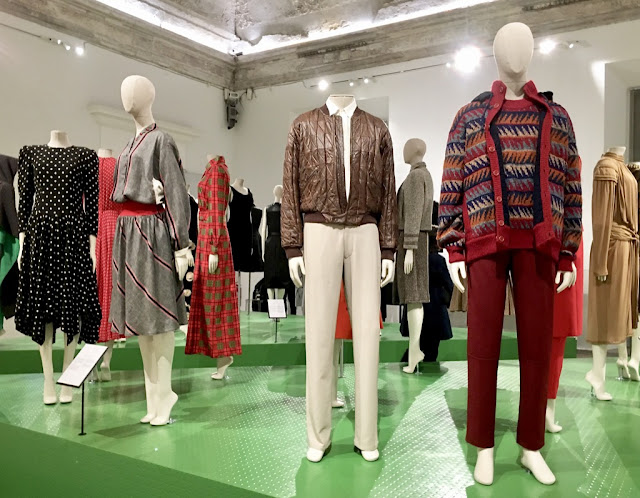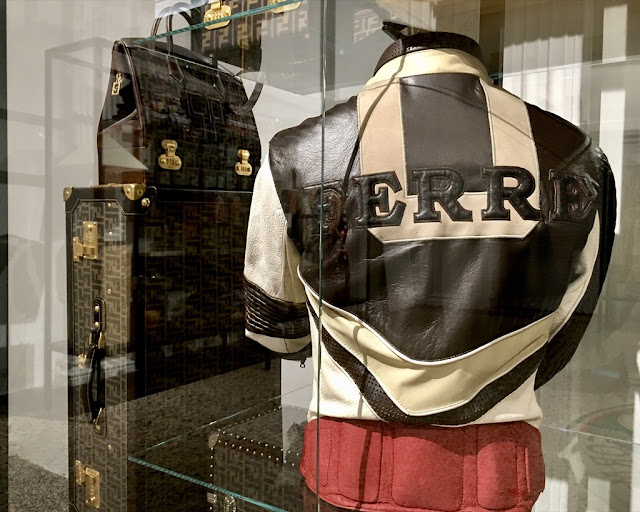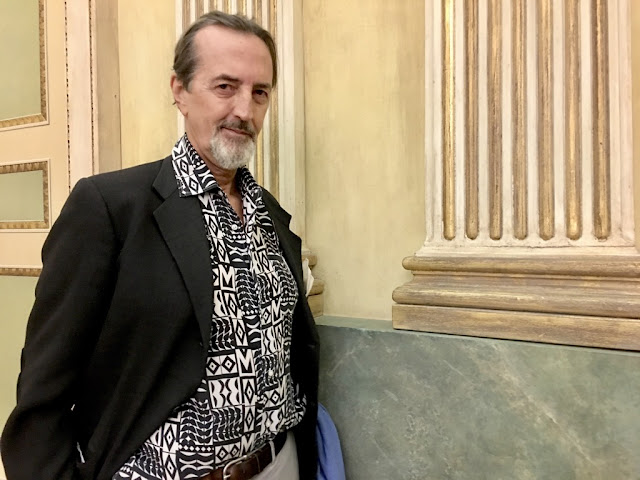copyright Fondazione Fulvio Roiter - courtesy Casa dei Tre Oci
Casa dei Tre
Oci
Fulvio Roiter –
Photographs 1948-2007
At
the Casa dei Tre Oci, Fulvio Roiter –
Photographs 1948-2007, curated by Denis
Curti, until August 26, is the first retrospective of the great
photographer’s work since his death in 2016. Two hundred photographs, vintage
for the most part, recount the artistic path of the Venetian photographer. Promoted
by the Fondazione di Venezia, in
partnership with the City of Venice,
the show ranges over the whole of his career, and is the most complete
monographic show ever to be devoted to the artist. This is a tribute and a
memento that the Casa dei Tre Oci has dedicated to the photographer
who, more than any other, has conjoined the image of Venice to his name.
Fulvio Roiter
- Acqua Alta in Piazzetta San Marco - 2002
Denis Curti, Lou Embo Roiter, Giovanni Dell’Olivo and
Emanuela Bassetti
copyright Fondazione Fulvio Roiter - courtesy Casa dei Tre Oci
Venice in
Black and White
A Self Portrait
The heart and soul of Fulvio Roiter's work was Venice, the city that first invited his
eyes to look through a viewfinder in order to bring to light what nobody had
seen before. A magical city overflowing with history, the set for a film that
had never been released but that soon everyone would want to see by walking
along the alleys by the lagoon. His photos had the power of a megaphone and
managed to connect the city to the world. In fact, Venice was the research
field where Roiter discovered his artistic identity, precisely at the time when
the city was being reborn through unusual and attractive images, through
photographs that allowed the whole world to get to know its poetry and
enchantment.
Fulvio Roiter
- Piazza
San Marco - 1980
Evelyn and Jessica Roiter, Lou Embo Roiter and
Mattia Bianchi
Fulvio Roiter – Borges
and Lou at the Café Florian – 1983
Luca De Michelis and Denis Curti
copyright Fondazione Fulvio Roiter - courtesy Casa dei Tre Oci
Fulvio Roiter
- Squero
di San Trovaso -
1970
Venise a Fleur de
L’Eau
Chiara Valerio, Ezio Micelli and Cristiana Costanza
copyright Fondazione Fulvio
Roiter - courtesy Casa dei Tre Oci
Fulvio Roiter - Piazza
San Marco - 1983
Laura Mancini and Maria Grazia Rosin
copyright Fondazione Fulvio
Roiter - courtesy Casa dei Tre Oci
“The historical idea of
Venice was formed and developed in this way even at a
political level, from the times of the Most Serene Republic, above all through images that referred to and made
known the power of its beauty”.
Italo Zannier
Italo Zannier
Fulvio Roiter -
Fondamenta
delle Zattere -
1965
Federica Marangoni
copyright Fondazione Fulvio
Roiter - courtesy Casa dei Tre Oci
Fulvio Roiter
- Sulla
strada Gela - Niscemi, Sicilia - 1953
The After
Party
The Fulvio Roiter after party was held in the book clad residence of the
De Michelis Venice family home,
publishers of the beautiful catalogue Fulvio
Roiter Fotografie Photographs 1948-2007 – Marsilio. There Venetian intellectuals, artists, writers,
architects, photographers and entrepreneurs shared the good food, wine and the company.
Emanuela Bassetti and Cesare De Michelis
Fritto Misto and the queen of the house Lina
Silvia Dainese and Ugo Camerino
Stefano Gris, Adele Re
Rebaudengo and Camilla Marolla
Giulia Ghigi and Ziva Kraus
Cristina Nardini and
Silvana Bice
Valeria Regazzoni
Maria Novella Dei
Carraresi, Pierandrea Moro and Blu
Sandrina Rubelli,
Claudia Zanchi, Adele Re Rebaudengo and Giulio Manieri
Elia
Paolo De Benedittis and Elisabetta Capitanio
Photograph and copyright by Manfredi
Bellati
Blu




